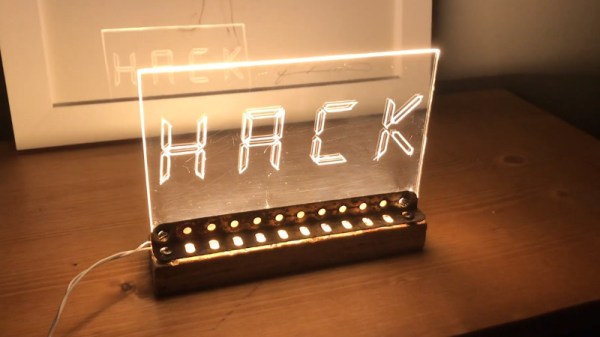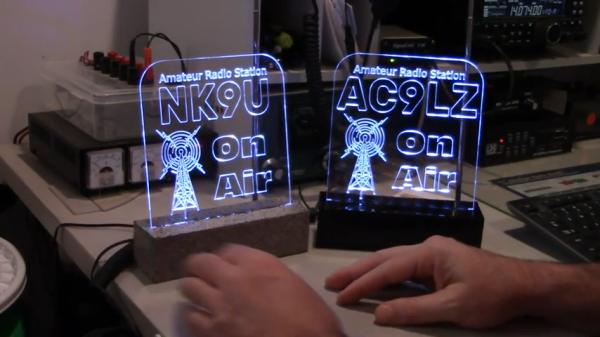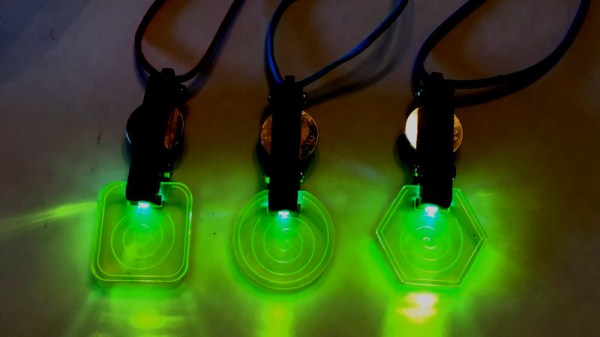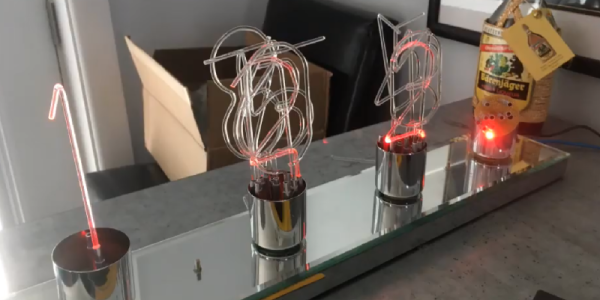Whether in a shop window or mounted to the top of consoles in NASA’s Mission Control Center, edge lit acrylic is a popular choice for making high visibility signs. Partly because of their striking hologram-like appearance, but also because they’re exceptionally cheap and easy to produce. Just how cheap and easy? Take a look at this recent video from [Hack Modular] for a perfect example.
Now you might think you’d need something like a CNC router to produce a sign like this, and for more complex images, that’s arguably the case. But if you’re only concerned with text, and have a fairly steady hand, you can pull off the etching step with nothing more exotic than a printed template and a razor blade. Of course, the LCD style font that [Hack Modular] picked for this sign is particularly well suited to hand cutting — if you’re interested in edge lit calligraphy, this method probably isn’t what you’re looking for.
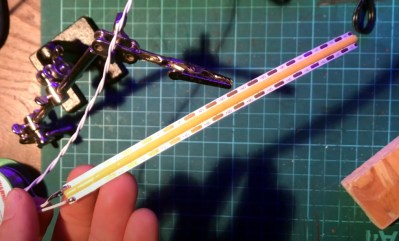
With the text carved into the acrylic, the only missing ingredient is light. For that, [Hack Modular] is using a 12 volt linear LED strip light. That is, instead of being dotted with individual LEDs like traditional strips, it provides a continuous band of light that’s perfect for this application. That gets stuck down to a scrap piece of wood, and a rusty angle bracket from an old Meccano set is used to hold the acrylic right on the center-line. If you think the final product looks like something that was created from trash, don’t feel bad, that was the intent.
The end result looks great. In fact, if we’re being honest, it’s a lot better than we would have thought was possible using hand tools. Granted the choice of font has a lot to do with that, but then again, we wouldn’t mind if all our edge lit acrylic signs ended up looking like big seven-segment displays either.
Continue reading “Building An Edge Lit Sign From The Scrap Pile”

